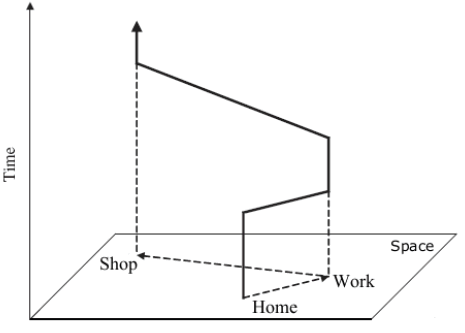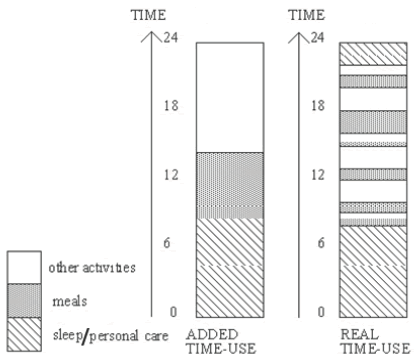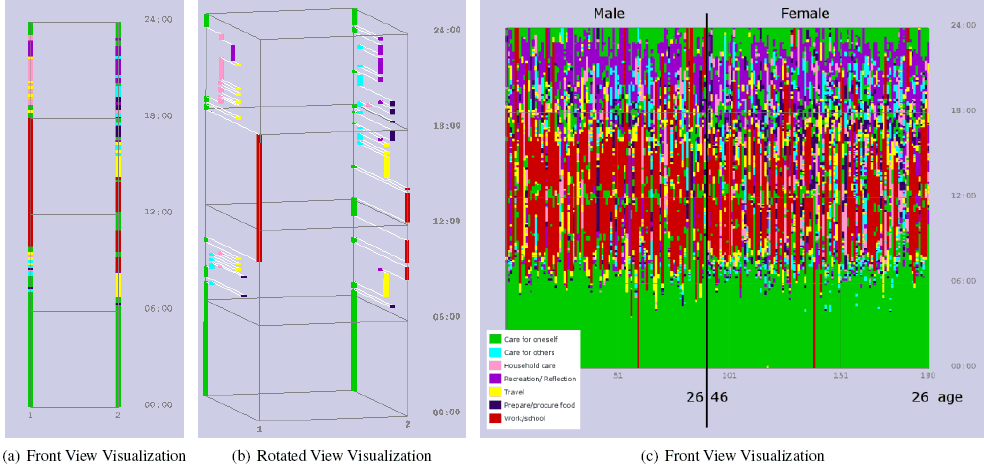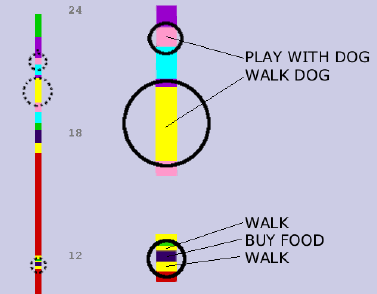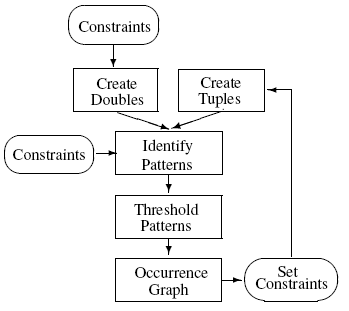Mining and Visualizing Activity Patterns in Social Science Diary Data: Difference between revisions
No edit summary |
No edit summary |
||
| Line 6: | Line 6: | ||
== Short description == | == Short description == | ||
{{Quotation|The ability to identify and examine patterns of activities | |||
is a key tool for social and behavioural science. In | |||
the past this has been done by statistical or purely visual | |||
methods but automated sequential pattern analysis through | |||
sophisticated data mining and visualization tools for pattern | |||
location and evaluation can open up new possibilities | |||
for interactive exploration of the data. This paper describes | |||
the addition of a sequential pattern identification method to | |||
the visual activity-analysis tool, VISUAL-TimePAcTS, and | |||
its effectiveness in the process of pattern analysis in social | |||
science diary data. The results have shown that the method | |||
correctly identifies patterns and conveys them effectively to | |||
the social scientist in a manner that allows them quick and | |||
easy understanding of the significance of the patterns.| [Katerina Vrotsou et al., 2007]}} | |||
Revision as of 09:52, 23 April 2008
Authors
- Katerina Vrotsou
- Kajsa Ellegård
- Matthew Cooper
Short description
is a key tool for social and behavioural science. In the past this has been done by statistical or purely visual methods but automated sequential pattern analysis through sophisticated data mining and visualization tools for pattern location and evaluation can open up new possibilities for interactive exploration of the data. This paper describes the addition of a sequential pattern identification method to the visual activity-analysis tool, VISUAL-TimePAcTS, and its effectiveness in the process of pattern analysis in social science diary data. The results have shown that the method correctly identifies patterns and conveys them effectively to the social scientist in a manner that allows them quick and
easy understanding of the significance of the patterns.
Figures
The original time geographical representation of human space-time behaviour. The, so called, ‘space-time path’ is a vertical trajectory representing the movement of an individual in space and time.
Traditionally time-use studies use representations that account for the accumulated time used for activities during the day. This ‘added time-use’ representation, seen in the left, hides information that may be important to a social scientist, for example when during the day an activity occurs, how many times per day and for how long. The ‘real time-use’ representation, seen in the right, clearly reveals this information.
Visualizations in the Visual-TimePAcTS framework. (a) shows the activity paths of a couple viewed from the front. This view is the ‘real time-use’ representation showing the switch between activities performed during a work day. (b) shows a slightly rotated view of the activity paths where the ‘movement’ between the activities and hence the similarity to the original ‘space time path’ becomes clear. (c) shows the front view visualization, which is the ‘real time-use’ representations, of a population subset in the visualization framework. Time is shown in the y-axis and the individuals are ordered along the x-axis by age and gender. Colours represent the 7 activity categories.
Visualization of an individual’s activity path showing examples of two pattern types. In the pattern <‘walk’;‘buy food’;‘walk’> the pattern activities occur immediately after each other in the activity path of the individual giving a zero gap (gap = 0). The activities of the pattern <‘walk the dog’;‘play with the dog’>, however, are separated in the activity path by two other activities which are not a part of the pattern, resulting in a gap of two (gap = 2).
Overview of the pattern identification algorithm. The algorithm is an adapted AprioriAll algorithm.
Results of the pattern identification algorithm as seen in the graphical user interface of the VISUAL-TimePAcTS application. In the figure the 278 identified pattern triples (3 − tuples) are selected and listed. From the pattern list the pattern <‘prepare food’; ‘eat dinner’; ‘wash up after dinner’> (<690; 6; 700>) is selected which occurs 82 times in the selected population subset.
An example of patterns identified by the algorithm. The triple pattern <prepare food; eat dinner; wash up after dinner>, (a), shows that this pattern is performed mostly by women. It’s subpattern <eat dinner; wash up after dinner>, (b), shows that more men are engaged in this pattern but the majority is still women. Finally at the single occurrence of the activity <eat dinner>, (c), shows that it is equally distributed between both sexes. This example shows the uneven division of labour within the household which becomes obvious through the visualization of the everyday patterns of the sample population.
Suitable Datatypes
Important Citations
Evaluation
Internal Links
External Links
References
[Vrotsou K., Ellegård K., Cooper M.] Mining and Visualizing Activity Patterns in Social Science Diary Data. In: Information Visualization, 2007. IV '07. 11th International Conference, pages 130-138, Zurich, Switzerland, 2007.
